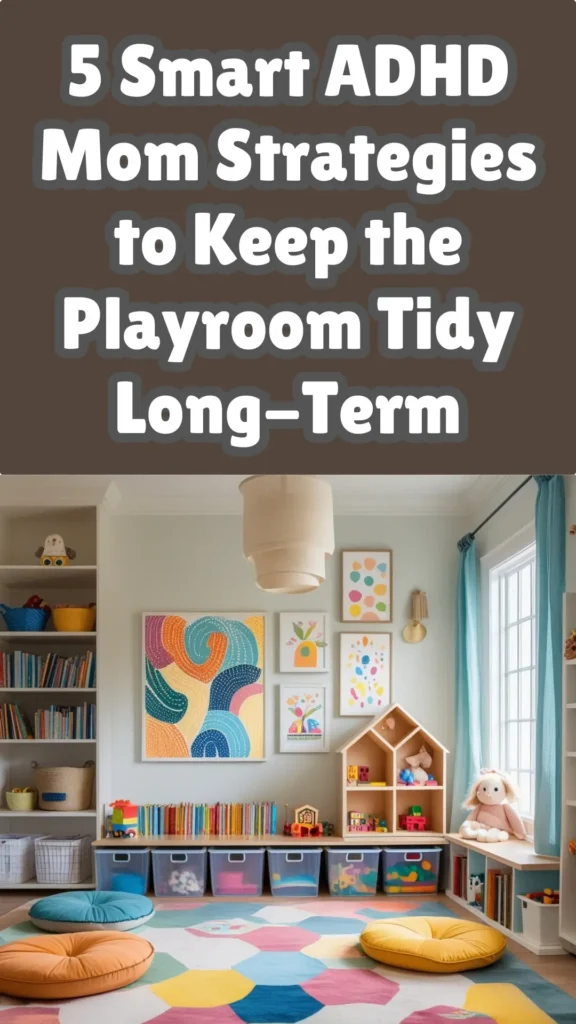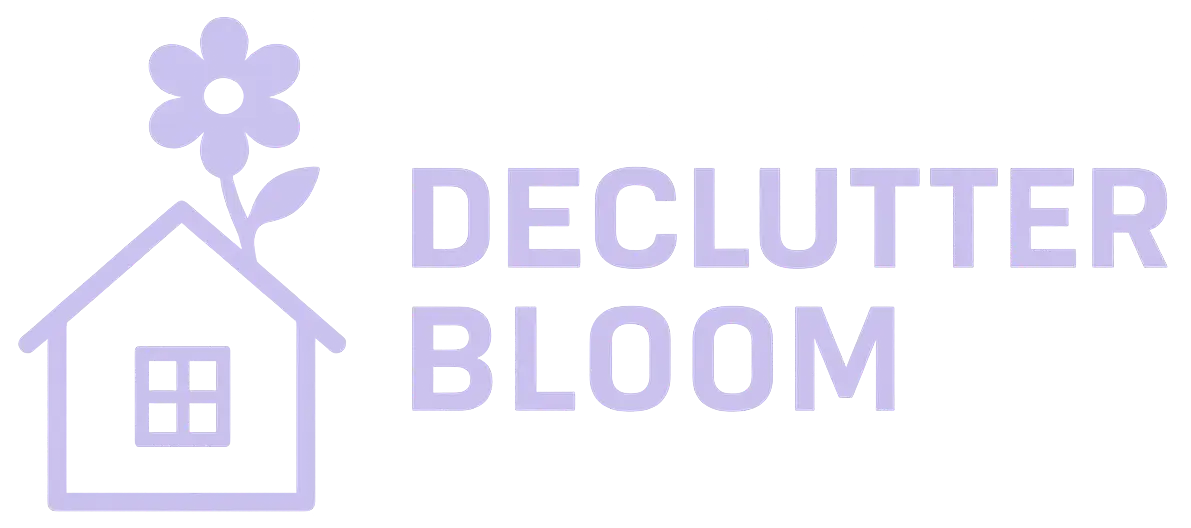Let’s be real for a second.
If you’ve ever stood in the doorway of your kid’s playroom and just… sighed (like, deep, soul-exhausted sigh), you are so not alone.
The toys multiply overnight. The bins don’t work. The cleanup takes longer than the play.
And let’s not even start on the tiny parts. Lego foot injuries should be a recognized medical condition.
Don’t forget to save this pin for later! Trust me, you’ll want to come back to these game-changing tips.

If you’re an ADHD mom, managing a playroom isn’t just one more chore. It’s an emotional minefield.
The mess feels like a constant reminder that you’re behind. That you should be able to keep up. That you’re failing.
But here’s the truth no one says loud enough: You’re not failing. You’re just trying to manage chaos with a brain that already runs on chaos.
So what if we made it easier? Like, actually easier. With systems that don’t rely on executive function you don’t have on demand?
Here are five real-deal strategies that have made my life lighter, my home more livable, and my kid’s playroom way less of a disaster zone.
Bonus: These work whether or not your child also has ADHD. You’ll find value here no matter what your family dynamic looks like.
1. Rotate Toys Like a Tiny Toy Store Manager
Ever notice how your kid gets bored even with a mountain of toys? That’s overstimulation. And it’s a killer for both them and your ADHD brain.
The solution? Toy rotation.
Keep out only a fraction of toys (the ones currently loved or in use). Pack the rest away in bins or clear totes.
Every month or two, swap them out. It makes old toys feel new, minimizes clutter, and keeps cleanup fast.
Why this helps YOU: Less visual chaos, fewer decisions, and no more “how did this room explode in five minutes” moments.
2. Create Play Zones (But Keep Them Super Simple)
I used to roll my eyes at the word “zones.” It felt like HGTV nonsense.
But hear me out. This works if you keep it ADHD-real.
A few examples that made a difference:
A shelf near the window = Reading spot
Rug + toy kitchen = Pretend play
Floor bin of trucks by the wall = Car corner
You don’t need Pinterest-perfect corners. Just give each kind of toy a go-to spot.
Even if your kid dumps it all out anyway (been there), resetting becomes easier because everything has a home.
3. Use Open Bins with Picture Labels (Text Optional)
This one is gold.
Use open bins (no lids, no latches, no fancy stacking). Add removable labels. I like hanging tags with little icons or photos of what goes inside.
Lego bin = picture of Legos. Doll bin = picture of dolls.
You don’t have to label everything, but just enough to make it brain-easy.
This way, you can clean up in two minutes without thinking, and your kid can actually help (or at least try).
4. Build a “10-Minute Reset” Into the End of the Day
ADHD brains hate long cleanups. They can handle short rituals.
So instead of saving the whole mess for tomorrow (cue overwhelm), set a timer for 10 minutes in the evening and do a fast reset. Just the playroom.
I call this my “floor rescue.”
Sometimes I do it with music, sometimes in silence, sometimes while grumbling. Doesn’t matter.
What matters is the floor gets cleared enough to feel possible again tomorrow.
Hot tip: Invite your kid to help only if you have the energy to manage it. Otherwise, solo is fine.
5. Let Shelves Be the Limit (No Overflow Allowed)
This might sound silly, but trust me: pick one shelf unit and declare it the toy zone.
That’s it. That’s the boundary.
If toys don’t fit? Something has to go or rotate out.
This takes a bit of guts at first, but it’s a game-changer.
You’re not decluttering daily, you’re simply enforcing a physical limit. ADHD brains need visual cues and clear space boundaries.
The shelf becomes the container, and everything else bows to it.
Final Thoughts: You’re Not a Hot Mess (You’re Just Overloaded)
Look, it’s not just toys on the floor. It’s the mental clutter, the invisible labor, the constant second-guessing.
And when you have ADHD, even the idea of keeping a playroom tidy long-term can feel laughable.
But you’re not lazy. You’re not failing. You just haven’t been given systems that actually work with your brain.
These five aren’t magic, but they do work. And they’re gentle.
They respect your energy, your limits, your kid, and your life.
You don’t have to clean like other moms.
You just need tools that make sense for you.
And now you have them.
Save this post. Revisit it when the toys creep out again.
You’ve got this, one small, sustainable shift at a time.
